 |
Hickory Hill
The Carter family first started buying land for what would become Hickory Hill in 1735. By 1819 the Carters owned over 4,000 acres, and Robert Carter gave 500 acres called Hickory Hill to his daughter Anne Butler Carter on the occasion of her marriage to William Fanning Wickham in December of that year.
The original, wooden Hickory Hill was built in 1820, with a four-acre ornamental garden laid out alongside. William and Ann raised wheat as their cash crop, and eventually grew Hickory Hill to 3300 acres in size.
Ann's sister was Anne Hill Lee, the mother of Robert E. Lee. The Lee family visited Hickory Hill often, before, during and after the Civil War. Mrs. Robert E. Lee and their daughters left Arlington and stayed at Hickory Hill through much of the war.
|
 |
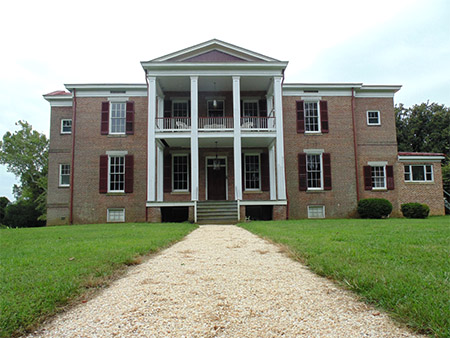 |
|
 |
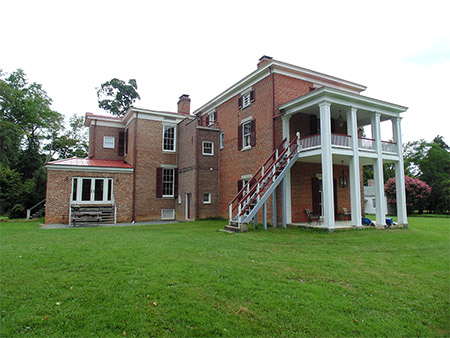 |
 |
William and Ann's son was Williams Carter Wickham. In the years leading up to the Civil War, Williams, a lawyer in and around Hanover, was a member of Virginia's Secession Convention and voted against seccession from the Union. Once President Lincoln demanded that Virginia help to overcome her sister states or be subjugated herself, however, Williams felt that his duty was to fully support the Confederacy.
Williams Carter Wickham raised a local cavalry company, the Hanover Dragoons, at Hickory Hill in 1859. The Hanover Dragoons enlisted in the Confederate Army in 1861, were made Company G of the 4th Virginia Cavalry, and Williams was made their Lieutenant Colonel. Severely wounded at the Battle of Williamsburg in May of 1862, Williams returned to Hickory Hill to convalesce.
Before beginning his famed Ride Around McClellan in June of 1862, J.E.B. Stuart conferred with the still-recovering Williams Carter Wickham at Hickory Hill, so as to benefit from Colonel Wickham's vast knowledge of the local terrain. |
|
 |
|
|
A three-story brick addition had been added to the house at Hickory Hill in 1857. This addition escaped damage in the 1875 fire, and it was there that the family lived while the rest of the house was reconstructed.
|
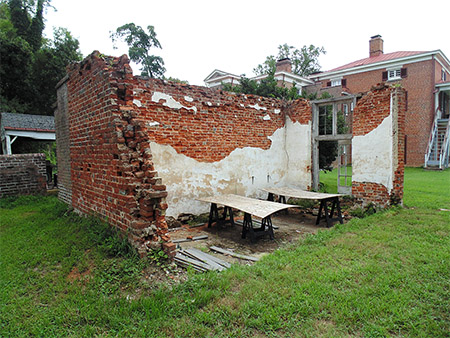 The ruins of Hickory Hill's greenhouse The ruins of Hickory Hill's greenhouse |
 |
Hickory Hill had its own railway stop called Wickham Station, from which its wheat, corn, oats and other fruits and vegetables were sent to Richmond for sale.
Williams Carter Wickham's son was Henry Taylor Wickham, who was elected to the Virginia House of Delegates in 1879, and served, on and off, in the Virginia Senate from 1897 until 1943. His son, Captain Williams Carter Wickham, USN, was the last Wickham to own Hickory Hill.
Additions were made to Hickory Hill over the years to bring it into the modern age: A steam-boiler heating system and gas for lighting in 1915, Electricity in 1930, and a kitchen in 1952, but the house retains much of its 1875 appearance.
Hickory Hill was added to the National Register of Historic Places in 1974, and is currently owned by Shannon and Lesia Pritchard, who have restored the house beautifully. |
|
 |
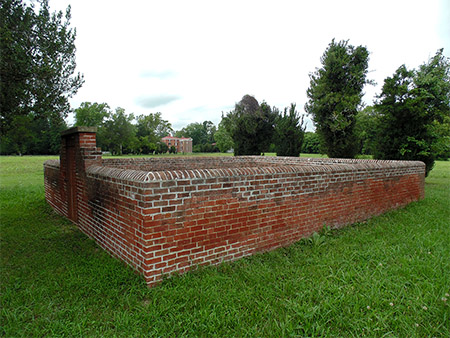 Hickory Hill's cemetery, to the house's southeast. Buried here are six residents of Hickory Hill: Anne Carter Wickham, John Wickham, Julia Leiper Wickham, Lucy Penn Wickham, William Fanning Wickham and Williams Carter Wickham. Hickory Hill's cemetery, to the house's southeast. Buried here are six residents of Hickory Hill: Anne Carter Wickham, John Wickham, Julia Leiper Wickham, Lucy Penn Wickham, William Fanning Wickham and Williams Carter Wickham. |
 |
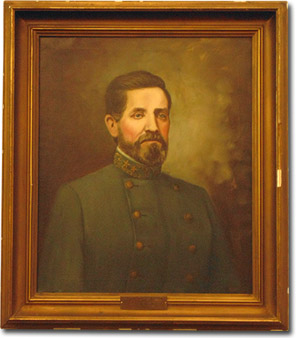 The portrait of Williams Carter Wickham that hangs in the Historic Hanover County Courthouse The portrait of Williams Carter Wickham that hangs in the Historic Hanover County Courthouse |
|
|
 |


